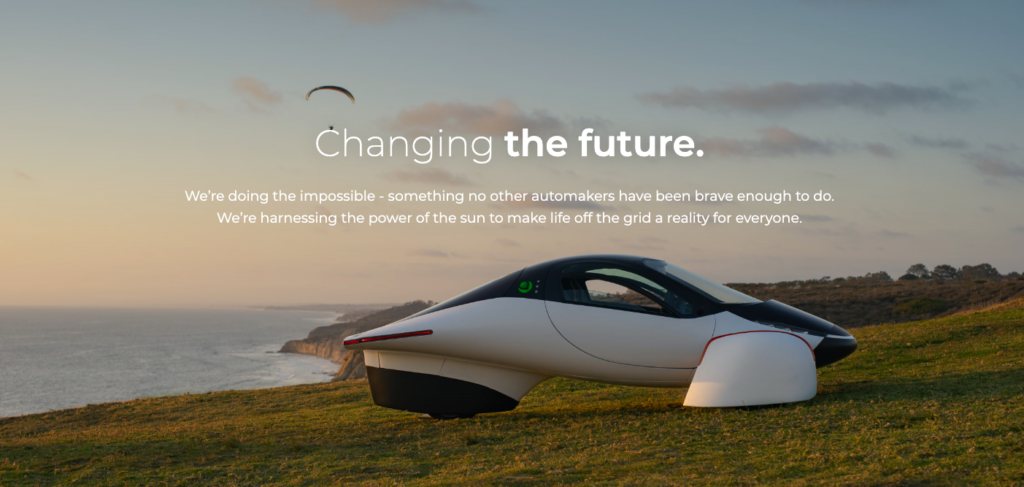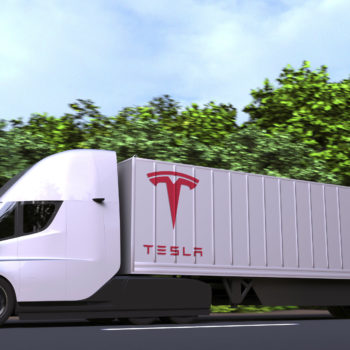|
|
Harnessing the power of the sun has long been a dream of environmentally conscious individuals seeking sustainable transportation solutions.
In recent years, significant strides have been made in the realm of solar vehicles, paving the way for a cleaner and greener future on the roads. These innovative machines not only exemplify cutting-edge technology but also showcase a remarkable fusion of efficiency, style, and renewable energy.
The market for solar vehicles is evolving at a rapid pace, with manufacturers vying to create the most efficient and visually stunning designs. Whether you’re a daily commuter seeking a fuel-free alternative or an adventure enthusiast yearning to explore nature responsibly, the solar vehicle market has something to offer.
In this article, we will explore the top solar vehicles currently available, delving into their unique features, technological advancements, and the ways they are reshaping the automotive landscape.
Solar Vehicles: A New Era of Transportation
The rise of solar vehicles signifies a paradigm shift in transportation.
With the pressing need to reduce carbon emissions and reliance on fossil fuels, solar-powered transportation offers a compelling solution.
These vehicles leverage advancements in solar technology to harness the sun’s energy and convert it into usable power, enabling cleaner and more sustainable mobility options.
By embracing solar vehicles, we can reduce our environmental footprint and contribute to a healthier planet for future generations.
Top Solar Vehicles in the Market
The market for solar vehicles is evolving at a rapid pace, with manufacturers vying to create the most efficient and visually stunning designs.
Let’s explore some of the top solar vehicles currently available:
Lightyear 2: The Epitome of Efficiency
At the forefront of solar vehicle innovation is the Lightyear 2, a sleek and long-range solar car.
Equipped with solar panels integrated into its body, the Lightyear 2 maximizes energy efficiency and extends its range. These panels capture sunlight, converting it into electricity, providing an additional source of power to supplement the vehicle’s batteries.
With a range of more than 800 kilometers (500 miles) on a single charge, the Lightyear 2 exemplifies the potential of solar technology in sustainable transportation.
Aptera: Reimagining Efficiency and Style

source: https://aptera.us/
The Aptera takes solar vehicle design to new heights, combining futuristic aesthetics with outstanding efficiency.
This three-wheeled electric vehicle features a cutting-edge solar body adorned with integrated solar cells. These solar panels are meticulously positioned to harness sunlight throughout the day, ensuring continuous charging and extending the vehicle’s range.
The Aptera’s streamlined design, lightweight materials, and optimized aerodynamics result in remarkable energy efficiency, making it a game-changer in the solar vehicle market.
Fisker Ocean: Luxury Meets Sustainability
Luxury and sustainability converge in the Fisker Ocean, an all-electric SUV with an optional solar roof.
Fisker’s unique approach integrates a large solar panel into the vehicle’s roof, capturing sunlight and converting it into usable energy. This solar roof not only powers auxiliary systems but also contributes to extending the vehicle’s range.
The Fisker Ocean is a testament to the marriage of style, performance, and eco-consciousness, showcasing the potential of solar technology in high-end electric vehicles.
Squad Solar City Car: Urban Mobility Redefined

source: https://www.squadmobility.com/
In bustling urban environments, the Squad Solar City Car shines as a compact and sustainable mobility solution.
Designed for short trips and crowded streets, this two-seater electric vehicle incorporates solar panels on its roof, capturing sunlight and converting it into energy.
The Squad Solar City Car boasts a range sufficient for daily commutes, making it an ideal choice for urban dwellers seeking an eco-friendly and cost-effective mode of transportation.
Electric Vehicles with Solar Roofs: A Glimpse of the Future
Solar technology is also making its way into traditional electric vehicles, with manufacturers integrating solar roofs to enhance charging capabilities.
Companies like Toyota and Hyundai have introduced models with solar panels embedded in the vehicle’s roof, harnessing sunlight to supplement the battery’s charge.
While the energy generated may not power the entire vehicle, it serves as a supplementary source, reducing reliance on external charging stations and extending the electric range.
Benefits of Solar Vehicles
Solar vehicles offer a range of compelling benefits that make them an attractive choice for eco-conscious individuals. Here are some notable advantages:
- Renewable Energy: Solar vehicles harness the power of the sun, a virtually unlimited and renewable energy source. By utilizing solar panels to convert sunlight into electricity, these vehicles significantly reduce dependence on fossil fuels and contribute to a greener and more sustainable future.
- Reduced Carbon Emissions: Solar vehicles produce zero tailpipe emissions, leading to a significant reduction in greenhouse gas emissions compared to traditional internal combustion engine vehicles. By choosing solar-powered transportation, individuals can actively combat climate change and mitigate their carbon footprint.
- Energy Cost Savings: Solar energy is free and abundant, meaning the fuel for solar vehicles comes at no additional cost. Once the initial investment in solar panels and vehicle integration is made, the ongoing operational costs are significantly lower compared to gasoline or diesel-powered vehicles, resulting in long-term cost savings.
- Energy Independence: Solar vehicles provide a level of energy independence. With the ability to generate their own electricity, owners are less reliant on external charging infrastructure and can access clean energy wherever sunlight is available. This aspect is particularly beneficial in remote or off-grid locations, where access to traditional refueling options may be limited.
- Quiet and Smooth Operation: Electric motors used in solar vehicles offer a quiet and smooth driving experience. Eliminating the noise and vibrations associated with internal combustion engines, solar vehicles provide a serene and enjoyable ride, contributing to a more comfortable driving environment.
Solar Vehicles: Challenges
While solar vehicles hold immense promise, several challenges must be addressed for their widespread adoption. These include:
- Limited Solar Panel Efficiency: Despite advancements in solar panel technology, current efficiency levels limit the amount of energy that can be captured from the sun. Enhancements in panel efficiency are crucial to maximize energy generation and improve the range and performance of solar vehicles.
- Weather Dependency: Solar vehicle performance is subject to weather conditions. Cloudy days or limited sunlight can impact the charging capacity, potentially reducing the vehicle’s range. Innovative solutions, such as incorporating energy storage systems, are being explored to mitigate this challenge and provide a consistent energy supply.
- Weight and Space Constraints: Solar panels add weight and occupy space on the vehicle’s exterior. Balancing the need for an optimal number of solar cells without compromising the vehicle’s aerodynamics, aesthetics, and practicality presents an ongoing design challenge for solar vehicle manufacturers.
- Initial Cost: Solar vehicles often come with a higher upfront cost compared to conventional vehicles. This cost is attributed to the integration of solar panels, advanced battery technologies, and other specialized components. Wider market adoption and technological advancements are expected to drive down costs over time.
- Charging Infrastructure: Although solar vehicles offer energy independence, access to charging infrastructure remains a challenge. Public charging stations with solar charging capabilities are not yet as widespread as conventional charging stations. Continued investment in charging infrastructure, both for solar-powered and traditional electric vehicles, is necessary to support the growing demand.
Despite these challenges, the progress made in solar vehicle technology and the increasing demand for sustainable transportation solutions provide a positive outlook for the future of solar vehicles. Continuous innovation, research, and collaboration among stakeholders will pave the way for overcoming these obstacles and unlocking the full potential of solar-powered mobility.
Conclusion
Solar vehicles represent a promising solution for sustainable transportation, combining renewable energy with cutting-edge technology.
Despite challenges, such as limited solar panel efficiency and charging infrastructure, the future of solar vehicles is bright. Continued research, development, and collaboration will drive innovation, making these vehicles more efficient and accessible.
Embracing solar vehicles offers tangible benefits, including reduced emissions and energy cost savings. With their fusion of renewable energy and stylish design, solar vehicles provide a compelling alternative to traditional vehicles.
By investing in research, development, and infrastructure, we can accelerate the transition to a sustainable and eco-friendly transportation ecosystem.
The future of solar vehicles is a journey where innovation meets sustainability, bringing us closer to a greener and cleaner world.











No Comments